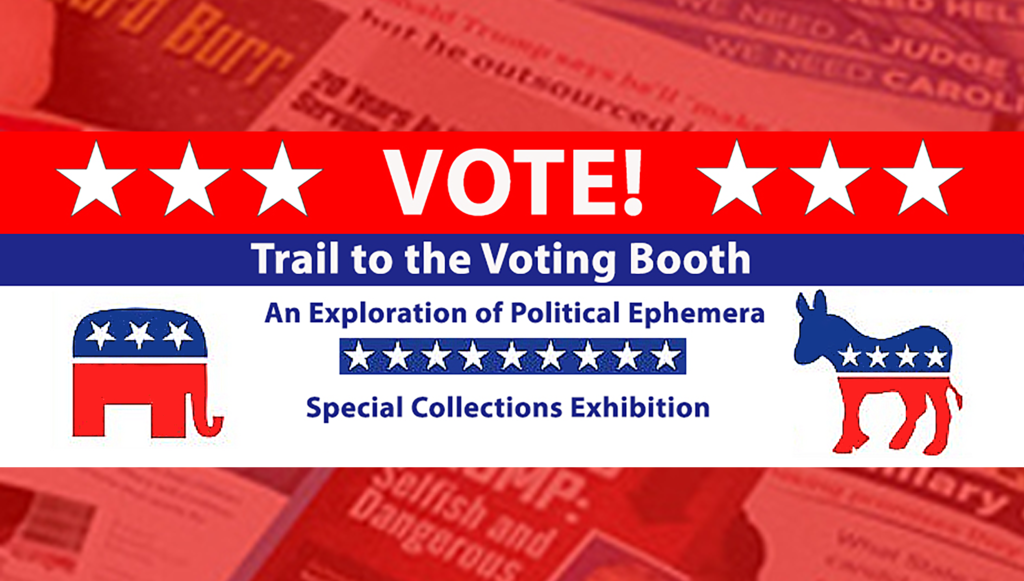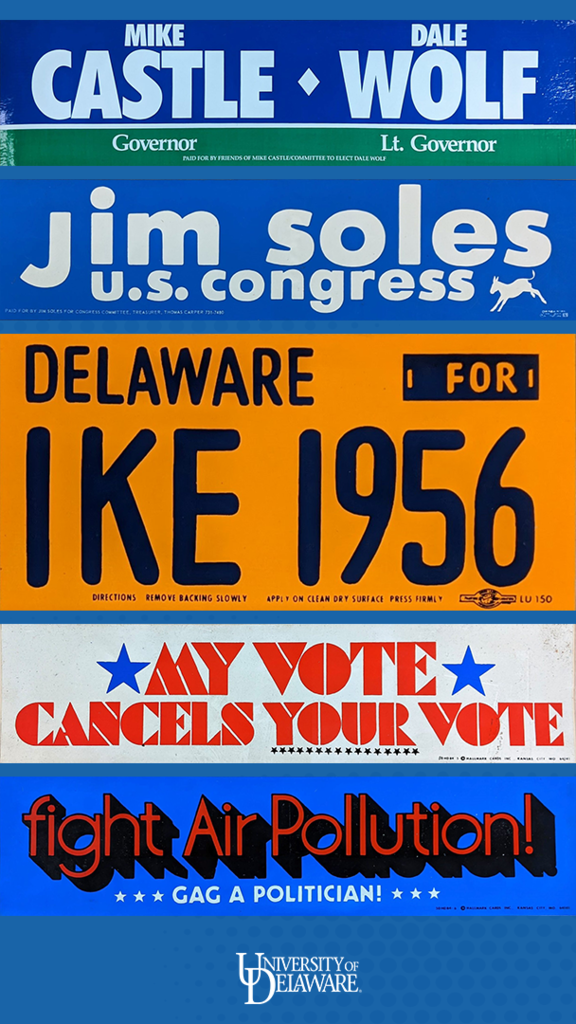Trail to the Voting Booth
Exhibit showcases how Americans talk about politics

By Eleni Finkelstein, University of Delaware senior and intern for the University of Delaware’s Center for Political Communication
JANUARY 27, 2021″Did you know that Delaware’s unique Return Day tradition began in 1791 when Sussex County residents returned to the county seat of Georgetown to hear election results, repeating the long, difficult journey after voting there only two days earlier? UD Library’s Trail to the Voting Booth: An Exploration of Political Ephemera showcases how Americans have talked about politics over the years through pamphlets, buttons, fan gear, songs, and more”with a special focus on Delawarean history and culture. You can view the virtual exhibit at Trail to the Voting Booth (udel.edu) or in person at the Special Collections Gallery of Morris Library.
In the United States, more than 500,000 elected officials serve the country today (U.S. Census Bureau, 1992). This exhibit illustrates how they have earned American votes over the past 240 years. A well-organized campaign platform is integral. Campaign Strategy: The Room Where it Happens features reports of critical issue surveys from the 1980s, letters to the New Castle County Council on candidate stances, results from Delaware surveys on voter choice and issue positions, and more documents.
On the Trail explores how Americans represent their chosen candidates with political paraphernalia like buttons, pins, costumes, branded cigarettes, and handkerchiefs. The first modern campaign button appeared in 1896 during the presidential election between William McKinley and William Jennings Bryan. Since then, buttons have been a popular representation of public support. Hats, such as the well-known “Make America Great Again? red baseball cap, have been a common form of support as well. Wearing support: Campaign apparel shows a variety of apparel and accessories worn by supporters at rallies over the years, such as a John F. Kennedy plastic hat from 1960.

To build rapport with voters and get their governing message out, candidates host events where voters can interact with candidates, from the first formal campaign announcements to rallies, town halls, and “meet and greets.” In Campaign Events, photographs and old newspapers from various rallies, such as a rally for Senator John J. Williams in Dover, Delaware, encapsulates the reactions of the crowd after hearing the official news of the senator’s candidacy.
Before Election Day, many campaigns supply voters with resources such as polling locations and how to apply for an absentee ballot as a final push to make sure all votes are counted. In the Voting Booth displays a script of an October 1954 radio announcement by the Delaware Democratic State Committee with information about voter registration and polling resources. The exhibit also showcases newspapers, door hangers, and voter turnout tallies.
After the results come pouring in, the real work begins. As soon as candidates declare victory and the celebrations end, a new election cycle begins just as quickly as the last one ended. The newly elected officials are sworn in and then begin their work to better the lives of their constituents, and in many cases, prepare for re-election.
America’s long tradition of democratic elections is still an exciting and relevant part of both national and local culture. John Caldwell, associate librarian and coordinator of political papers and electronic records, curated the exhibit. The physical exhibit is on display in the Special Collections gallery of Morris Library throughout 2021. Trail to the Voting Booth and other great virtual exhibits can be found online at exhibitions.lib.udel.edu.
